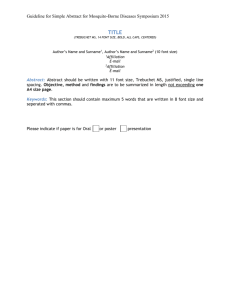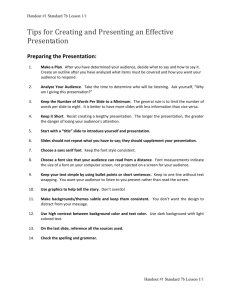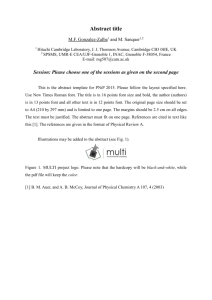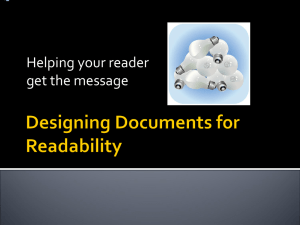Tips for Oral Presentations
advertisement
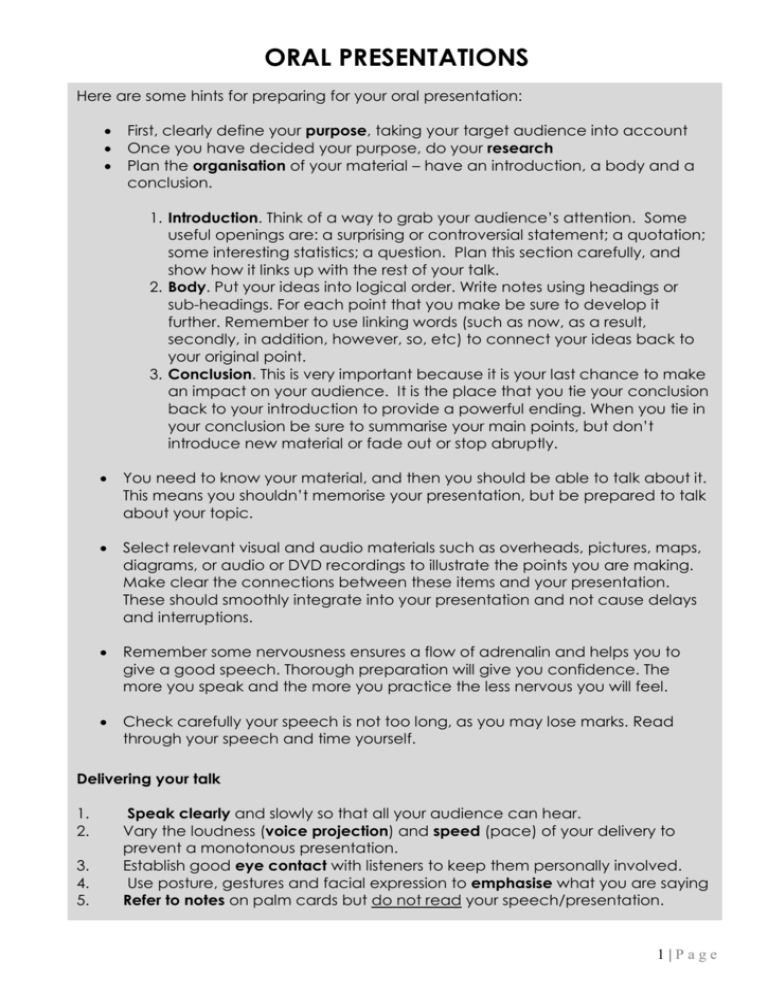
ORAL PRESENTATIONS Here are some hints for preparing for your oral presentation: First, clearly define your purpose, taking your target audience into account Once you have decided your purpose, do your research Plan the organisation of your material – have an introduction, a body and a conclusion. 1. Introduction. Think of a way to grab your audience’s attention. Some useful openings are: a surprising or controversial statement; a quotation; some interesting statistics; a question. Plan this section carefully, and show how it links up with the rest of your talk. 2. Body. Put your ideas into logical order. Write notes using headings or sub-headings. For each point that you make be sure to develop it further. Remember to use linking words (such as now, as a result, secondly, in addition, however, so, etc) to connect your ideas back to your original point. 3. Conclusion. This is very important because it is your last chance to make an impact on your audience. It is the place that you tie your conclusion back to your introduction to provide a powerful ending. When you tie in your conclusion be sure to summarise your main points, but don’t introduce new material or fade out or stop abruptly. You need to know your material, and then you should be able to talk about it. This means you shouldn’t memorise your presentation, but be prepared to talk about your topic. Select relevant visual and audio materials such as overheads, pictures, maps, diagrams, or audio or DVD recordings to illustrate the points you are making. Make clear the connections between these items and your presentation. These should smoothly integrate into your presentation and not cause delays and interruptions. Remember some nervousness ensures a flow of adrenalin and helps you to give a good speech. Thorough preparation will give you confidence. The more you speak and the more you practice the less nervous you will feel. Check carefully your speech is not too long, as you may lose marks. Read through your speech and time yourself. Delivering your talk 1. 2. 3. 4. 5. Speak clearly and slowly so that all your audience can hear. Vary the loudness (voice projection) and speed (pace) of your delivery to prevent a monotonous presentation. Establish good eye contact with listeners to keep them personally involved. Use posture, gestures and facial expression to emphasise what you are saying Refer to notes on palm cards but do not read your speech/presentation. 1|Page DIGITAL SLIDE PRESENTATIONS (eg: PowerPoint) Some assessment items may require you to prepare a visual presentation to support your oral presentation. The main design rule here is to keep it simple. Use a consistent design on each slide to link the presentation together Keep pages uncluttered Use a font size of 12 point and above Select font styles that are formal Limit the words on each slide. Write only the main ideas, usually in dot points Avoid reading word for word from the slides Use a variety of features only where appropriate to the content (font, pictures, sound). Avoid overusing special effects (animations) Reference all quotes and diagrams The page design is inconsistent through the presentation Including font, colour, headings and backgrounds Some of the font is too small for the audience to read. There is too much variety in size, colour and style of font. Including visuals is effective but source of diagram not acknowledged 2|Page





